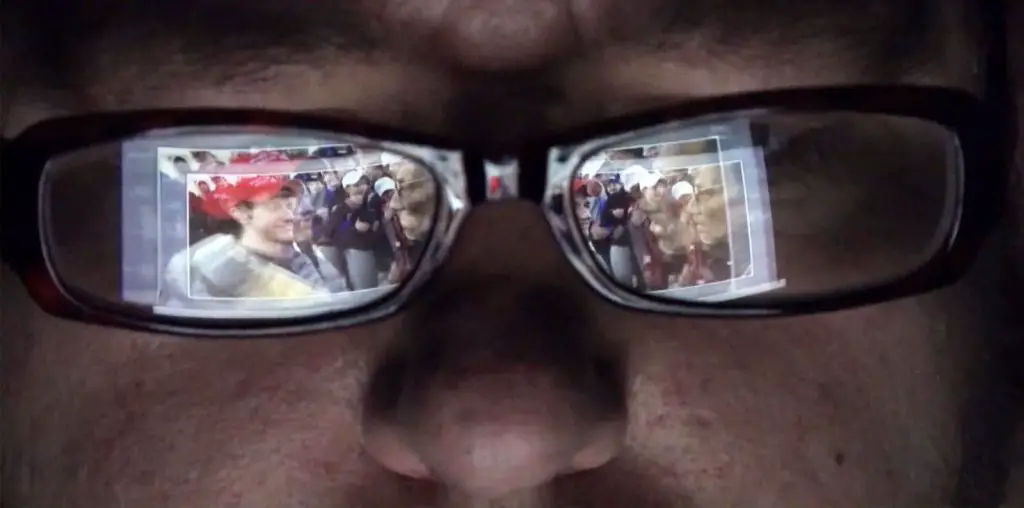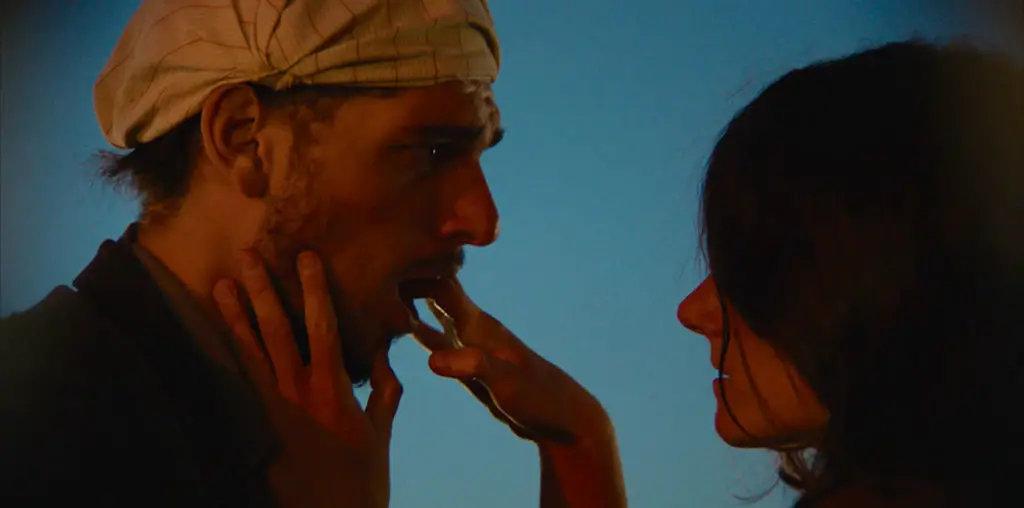
Lisa Kirk Colburn’s feature documentary Gottfried Helnwein and the Dreaming Child delivers us the behind-the-scenes story of The Child Dreams, an opera production designed by artist Gottfriend Helnwein for the Israeli Opera in Tel Aviv in 2010. Based on a play by now-deceased Israeli playwright Hanoch Levin, The Child Dreams “vividly portrays the hopes and dreams of innocent children…”, one of many themes of childhood that Helnwein has embraced in his other works in the past.
And all seems like a brilliant, simple artistic collaboration at first, with Helnwein doing his best to keep the production design true to what he thinks Levin would’ve wanted. Conflict arises when the opera’s director, Omri Nitzan, or the Israeli Opera production team, challenge Helnwein’s interpretations, most notably in casting the lead. Levin originally wanted a child to play the lead, and so does Helnwein, but Nitzan thinks an adult playing a child would be, if not more appropriate, easier to pull off. Helwein points out that a child can do no wrong in playing a child, as no matter how they act, when you look, you see a child. When an adult plays a child, however, it looks just like that at all times: an adult pretending to be a child.
At first a compromise is met, with the child as the lead but an adult singing as her operatic shadow. Child labor laws then come to the fore after the production receives a letter from the Ministry of Labor, however, and the production has to scrap the idea of the child being the lead all the way through; now the singer will be portraying the child for much of the production. Beyond the bureaucratic and labor issues, Helnwein also sees this as being a problem of ego; no adult singer wants to be cast as a lead, only to play in the shadows of a child.
Other issues begin to pop up, though they seem to fall more into the realm of the normal level of artistic collaboration conflicts one would expect on an operatic production. The lighting designer, Bambi, has a few contentious moments with Helnwein and company, for example, regarding how best to light a scene, and what can or can’t be done on stage. In the end, though, what you would hope happens finally does happen: amid the confusion, chaos and artistic conflicts, something wholly unique and outstanding is born. Though, yeah, I’m with Helnwein on the casting situation; no matter how great things looked or sounded, I still had trouble buying that the singer was a kid.
As far as documentaries go, this is a very matter-of-fact and dry affair. Beyond still images or footage of the work being done on the show, the majority of the film is talking head moments with Helnwein. And for as many conflicts arise in the film, everyone seems to keep things at a soft-spoken level of contention. I kept expecting someone to finally break and just start shouting around, but no one does. Then again, arguably the biggest fight/conversation in the film regarding the child-adult casting winds up happening at a closed-door meeting that we don’t see. You get the feeling that, if ever things truly were going to boil over into an intense confrontation, it happened then.
One of the great things about this documentary is that, while many out there might be familiar with Helnwein’s artwork or installations, they may not be familiar with where his ideas come from, or what it’s like when he works. In that way, the film is a wonderful look at a stunning contemporary artist. If you get nothing else out of the film, seeing Helnwein at work is worth checking out.
For me, I wish I’d gotten to see the resulting opera too, but that’s, you know, a different movie (or, ahem, opera). It is nice to hear the different explanations for why certain set designs were utilized, or the story points being emphasized, but there’s nothing quite like experiencing something for yourself and finding your own meaning in it. Still, that’s a testament to the artists behind the opera and the filmmakers behind the documentary that, upon my seeing what went into it all, I became that much more intrigued in the opera itself. It doesn’t always work that way; sometimes the explanations can turn one off more than turn them on to a production.
In the end, Gottfried Helnwein and the Dreaming Child is not a particularly spectacular documentary, but the artist portrayed while at work, and the work itself, is spectacular enough to transcend what is a very by-the-numbers behind-the-scenes documentary otherwise. This does work as a standalone, but if the opera did exist in DVD or blu-ray format, I could also see this as an extended feature or extra on that disc.

